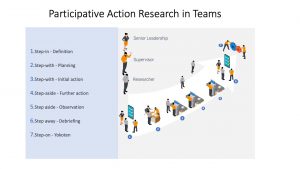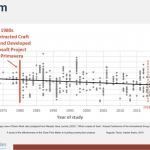By Dr. Anthony Kenneson-Adams FIoL, Head of Learning & Knowledge Transfer, Project7 Consultancy
In his book ‘Leadership in Organizations, Current Issues and Key Trends’ (2004), John Story begins his narrative by stating that an Amazon search in 2003 just using the word ‘Leadership’ “Netted an overwhelming 11,686 results.” Having completed that same search twenty years later, the Amazon counter reached its limit of “over 100,000 results” for this same single word leadership.
With so much written about leadership, you would think that by now leadership would be clearly understood and by extension, that leadership training would also be clearly understood, easily reproducible, sustainable, and proven to demonstrate success and value for money.
Yet we all know that this is far from reality.

The Business Leadership Training Industry.
It is somewhat incongruous then that business leadership training is now a huge industry, without clearly understanding what leadership training should be attempting to achieve particularly as we hurtle into the new frontier of leadership in the digital post-millennial Industrial Revolution, needing what is now being called ‘Leadership for Industry 4.0’.
So what is the way forward? Firstly, each business has to ask itself, “What leadership do we need; what are the traits, skills and behaviours that are missing today in our business? When they know that, they must ask what is it that we want our leadership with these traits, skills or behaviours to achieve?
- Is it efficiency, or innovation?
- Is it to build organizational culture?
- Is it to grow customer satisfaction?
- Is it for uniqueness or to manage the routine?
- Is it to develop organisational strategies or maximise profit?
- Is it to survive or to evolve?
I am not going to offer the usual cop-out that it is ‘all of the above’ as I believe businesses have to be far more focused on what they want from leadership training to meet immediate and long-term needs. Only once a business knows what it truly needs, can it start to understand what type of training will take them on the journey to achieve their business objectives. So, what does your business need in terms of leadership training and what do you need to do to fill the gap?
Here I think it is useful to look at the work of Clarke, Butcher, and Baily (2004) on the value of external or internal leadership training. Their research found that internal leadership development programmes are used twice as often as external leadership programmes, internal coaching nearly twice as often as external, and internal action-learning projects over three times as often as external ones. A comparison in their table below of the perceived advantages demonstrates the differential value.
| Method | Respondents who rated the method of high value % | Respondents who rated the method as being frequently used % |
| Internal coaching/mentoring | 69 | 45 |
| External coaching/mentoring | 71 | 25 |
| Internal business projects | 73 | 47 |
| External business projects | 46 | 13 |
| Observation of business leaders | 44 | 15 |
| Business school development programme | 57 | 27 |
| In-company development programmes | 53 | 45 |
This research showed that internal training with coaching and mentoring focused on real world internal business projects (with action learning) were not only more highly regarded by respondents but also were also rated as the most frequently used back in the day-to-day function of leadership when formal training had been completed.
Action Learning.
My personal experience over the last 45 years shows that leadership training that is not attached to real-world action projects is practically useless. Action Research (McNiff, 2017) is now an established technique where a researcher uses the Plan, Do, Observe Reflect cycle to lead action-learning research in the work environment. When this cycle is adapted as in the diagram above, (with the ‘researcher’ being the leadership trainee that has been trained in Participative Action Research in Teams (PART) (Kenneson-Adams, 2021) methodology, as a vehicle for learning to lead, then the leadership trainee learns by doing, and the team creates new knowledge in a formalised and sustainable way.
However, even when real world action learning does take place and reaps initial real business results, that success is not sustained or replicated unless the training is supported by top-down cultural change, supported, and modelled by senior leadership.
Add to this the need for post-millennials to be part of collaborative and self-fulfilling work environments then it can be seen that there is no one-size fits all off-the-shelf leadership training for any organization.
Specifically-designed internal leadership training also has the advantages of organisational context, cultural alignment, relationship building, continuous development, cost efficiency and importantly succession planning. The value of the external leadership trainer then becomes that of train the trainer, particularly of the action-learning or PART methodology making the internal leader the driver of leadership excellence in the business.
Summary.
Firstly, for leadership training to be at its most effective it needs to be designed for the specific needs of the business and aligned with focused mentoring and coaching to enable business results through action-learning projects with measurable outcomes.
Secondly and essentially for sustained success, the leadership training program needs to be supported and modelled by senior leaders who will rightly be looking for auditable business results.
Lastly, to build an effective internal leadership training program, the role of the external consultant should be in teaching learning methodology such as action-learning and PART that enables student-centred learning with immediate business impact, rather than generic leadership theories.











